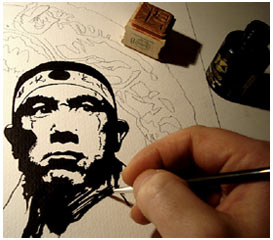Yesterday was the 40th anniversary of the suicide death of one of the most enigmatic Japanese men in recent history, Yukio Mishima, an acclaimed writer and poet who created such works as The Temple of the Golden Pavillion, about the obsessed Zen Buddhist monk who burned down the 552-year-old Kinkaku-ji temple in Kyoto in 1950. As is true with all Japanese who improve the image of Japan in the eyes of the world, Nobel Prize-nominated Mishima’s fame abroad made him a legend inside Japan, but as his politics became more right wing (which in Japan means being pro-Emperor, pro-military, and anti-U.S.), people started to realize he was quite off his rocker. On November 25th, 1970, he and several members of his private army Tate no Kai (the Shield Society) visited a Japanese military base and took the base commander hostage, demanding that the men be gathered to listen to a prepared address, during which he tried to incite the Self-Defense Forces to rise up against the current government and restore the Emperor to power militarily. When he received only jeers and laughter from the soldiers below, he went back inside and committed seppuku (ritual disembowelment). (For more on Mishima, we recommend this book by Donald Keene, or cut to the chase and get one of those awesome hachimaki headbands.)

Yukio “Most Epic Death of the 20th Century” Mishima, 1925-1970.














